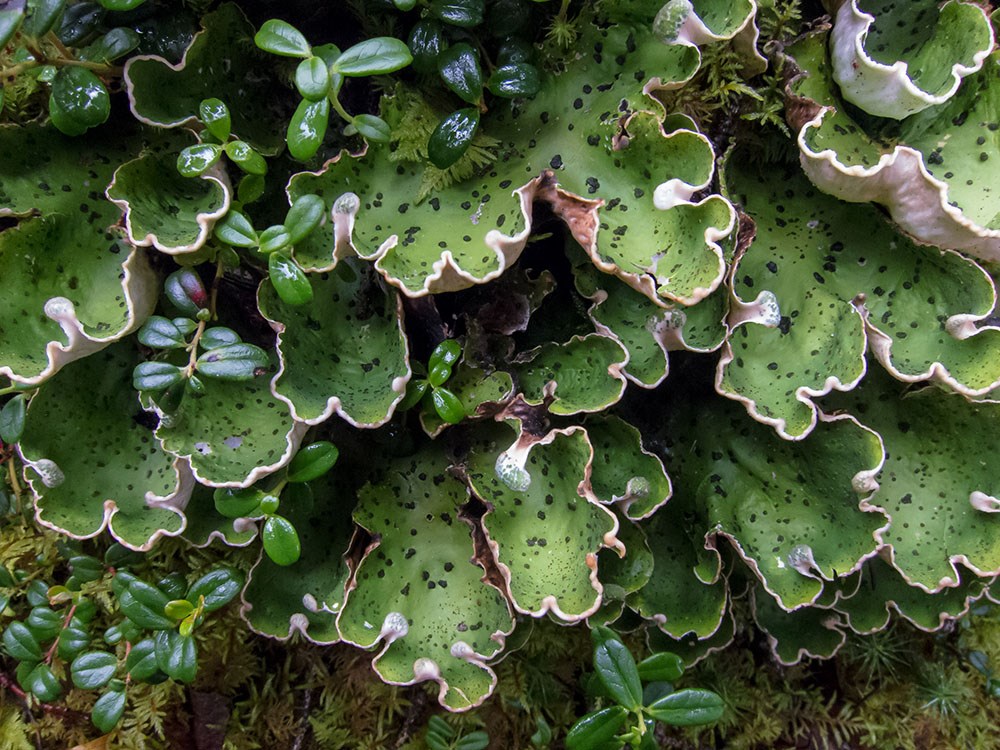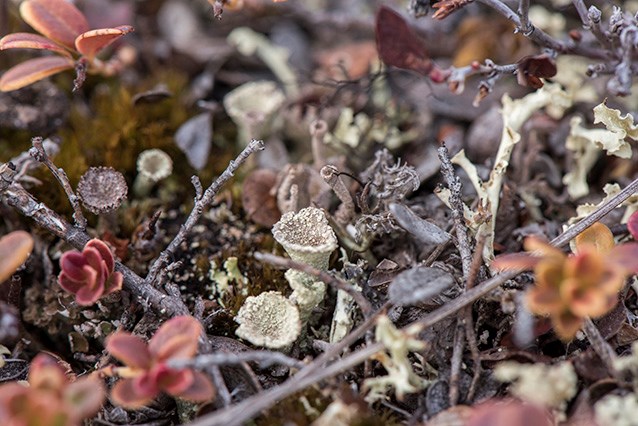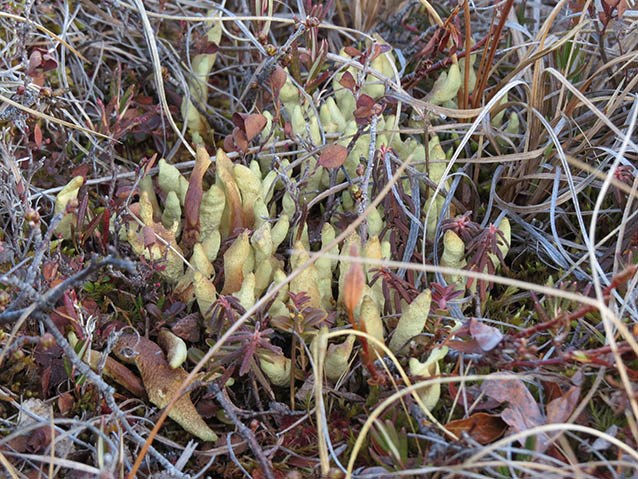Part of a series of articles titled Alaska Park Science - Volume 16 Issue: Science in Alaska's Arctic Parks.
Article
Lichens of the Arctic
By James Walton, National Park Service
Lichens are a conspicuous and colorful component of Alaska’s vegetation and one of the most species-rich groups of organisms to inhabit the Arctic. A lichen is a composite organism consisting of a fungus and an alga and/or cyanobacteria growing together in a symbiotic partnership. Together they are intimately connected to their environment. Lichens are highly sensitive to environmental conditions including airborne contaminants, substrate chemistry, and climate and are good indicators of environmental change.
They can be found in all types of ecosystems, from intertidal zones to the tops of mountains—even on nunataks (the exposed rock outcrops of icefields). They grow on soil, rock, bark, wood, barnacles, and buildings. Lichens are ecologically important as food, shelter, and nesting material for wildlife; and play important roles in hydrological and mineral cycles, notably nitrogen fixation.
Lichens are a conspicuous and colorful component of Alaska’s vegetation and one of the most species-rich groups of organisms to inhabit the Arctic. A lichen is a composite organism consisting of a fungus and an alga and/or cyanobacteria growing together in a symbiotic partnership. Together they are intimately connected to their environment. Lichens are highly sensitive to environmental conditions including airborne contaminants, substrate chemistry, and climate and are good indicators of environmental change.
They can be found in all types of ecosystems, from intertidal zones to the tops of mountains—even on nunataks (the exposed rock outcrops of icefields). They grow on soil, rock, bark, wood, barnacles, and buildings. Lichens are ecologically important as food, shelter, and nesting material for wildlife; and play important roles in hydrological and mineral cycles, notably nitrogen fixation.

NPS Photo / James Walton

NPS Photo / Nina Chambers

NPS Photo / Nina Chambers
When exposed to even low levels of certain pollutants, particularly sensitive species will decline or die, making lichen community composition a good indicator of ecosystem health. In park units such as Cape Krusenstern National Monument, lichen communities are being used to monitor mine-related and fugitive dust-borne heavy metals along the Red Dog Mine haul road. Recent findings confirm that lichen species richness decreases the closer they are to the haul road (Figure 1; Neitlich et al. 2017).


NPS Photos / James Walton
References
Holt, E. A. and P. N. Neitlich. 2010.
Arctic Network Lichen Inventory Dataset. Geospatial Dataset—2166259. Available at: https://irma.nps.gov/App/Reference/Profile/2166259.
Joly, K., F. S. Chapin III, and D. R. Klein. 2010.
Winter habitat selection by caribou in relation to lichen abundance, wildfires, grazing, and landscape characteristics in northwest Alaska. Ecoscience 17(3):321–333.
Neitlich, P. N., J. Ver Hoef, S. B. Berryman, A. Mines, and L. Geiser. 2017.
Effects of heavy metal–enriched road dust from the Red Dog Mine haul road on tundra vegetation in Cape Krusenstern National Monument, Alaska. NPS Natural Resource Technical Report. Submitted.
Nelson, P. R., B. McCune, and D. K. Swanson. 2015.
Lichen traits and species as indicators of vegetation and environment. The Bryologist 118(3):252-263.
Last updated: October 26, 2021
